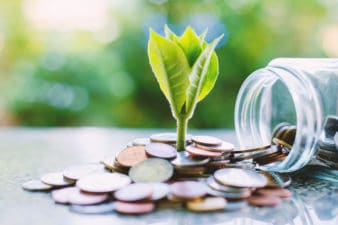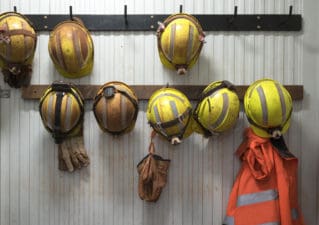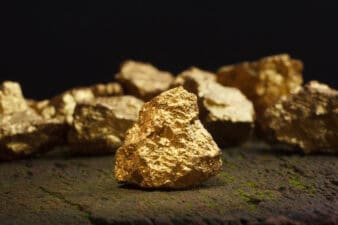Selecting the right company to invest in can make all the difference, even when comparing two companies that operate in the same industry and have similar market caps.
The gold sector is an area of the economy that has garnered attention lately as gold prices have finally rallied and stayed above the US$1,300-per-ounce level for the first time in years. Kinross Gold Corporation (TSX:K)(NYSE:KGC) and Yamana Gold Inc. (TSX:YRI)(NYSE:AUY) are two gold producers that look fairly similar at first glance, but they couldn’t be more different.
Let’s take a look at both companies to determine which one is better for your portfolio.
Kinross Gold Corporation
Kinross operates a number of mines situated in North and South America, Africa, and Russia. For 2016 Kinross is forecasting to produce between 2.7 million and 2.9 million ounces of gold with 61% of all production coming from facilities in the Americas. Russian production currently accounts for 25%. Kinross’s mines in West Africa make up the remaining 14%.
In 2010 Kinross acquired Red Back Mining for $7 billion. That acquisition proved to be nearly fatal for the company. Not only did gold prices begin an epic slide shortly after the deal was completed, but the assets acquired through the deal never performed as well as expected.
In the face of declining gold prices, producers were forced to look at ways to become more efficient and reduce costs, even shuttering some facilities that were not performing efficiently enough. Kinross is no exception and has struggled since the Red Back deal to rid itself of as much debt as possible; it has only just gotten long-term debt down to US$1.7 billion this past quarter.
Thanks in part to a resurgence in gold prices, Kinross’s balance sheet is much healthier now, and the company is ready to invest again. Kinross plans to invest US$300 million in the Tasiast mine to expand throughput. The investment will result in a 50% boost in throughput, and–by extension–boost production by an impressive 90%. The Tasiast mine was widely expected to be one of the most profitable aspects of the Red Back deal.
Kinross currently trades at $5.68 and, like most gold producers, has had a stellar year. The stock has appreciated by 126% year-to-date.
Yamana Gold Inc.
Yamana operates a number of mines located in Brazil, Argentina, Chile, Mexico, and Canada. For 2016 Yamana is forecasting to produce between 1.23 million and 1.31 million ounces of gold, between 6.9 million and 7.2 million ounces of silver, and between 122 million and 125 million pounds of copper.
In the most recent quarter, Yamana posted revenues from continuing operations of US$466.5 million, an increase over the US$455 million reported in the same quarter last year. The increase is largely attributed to increased gold prices, which were offset by a lower copper price. Yamana posted net earnings of US$32.9 million, or $0.03 per share, in the most recent quarter–a significant improvement over the US$7 million, or $0.001 per share, loss reported in the same quarter last year.
In terms of debt, Yamana managed to reduce debt by US$286 million last year; a further US$300 million is targeted over the next few years. In July of this year, Yamana announced the sale of the Mercedes mine in Mexico, which–upon granting of the necessary approvals–should provide Yamana with an additional US$122.6 million to reduce debt further. The deal is expected to close by the end of September.
Yamana currently trades at $5.80–up by 125% year-to-date. Yamana also pays a quarterly dividend of $0.01 per share, which results in a yield of 0.45% given the current stock price.
The better investment is…
Both Kinross and Yamana have been through a considerable amount of struggle and transformation over the past few years. Both have amassed staggering debt, and both have made impressive gains in getting that debt down to manageable levels.
With the current rally in gold prices, both companies have been able to finally turn much of the cost-cutting efficiencies implemented over the past few years into increased revenues, which investors will no doubt appreciate.
In terms of the better investment, however, I lean towards Yamana. While Kinross has a higher production forecast and more facilities, Yamana’s dedication to reducing debt by another $300 million during a time when gold prices are rallying is both disciplined and impressive. And while the dividend Yamana pays is paltry in comparison to other stocks, Kinross hasn’t offered a dividend in over three years.






